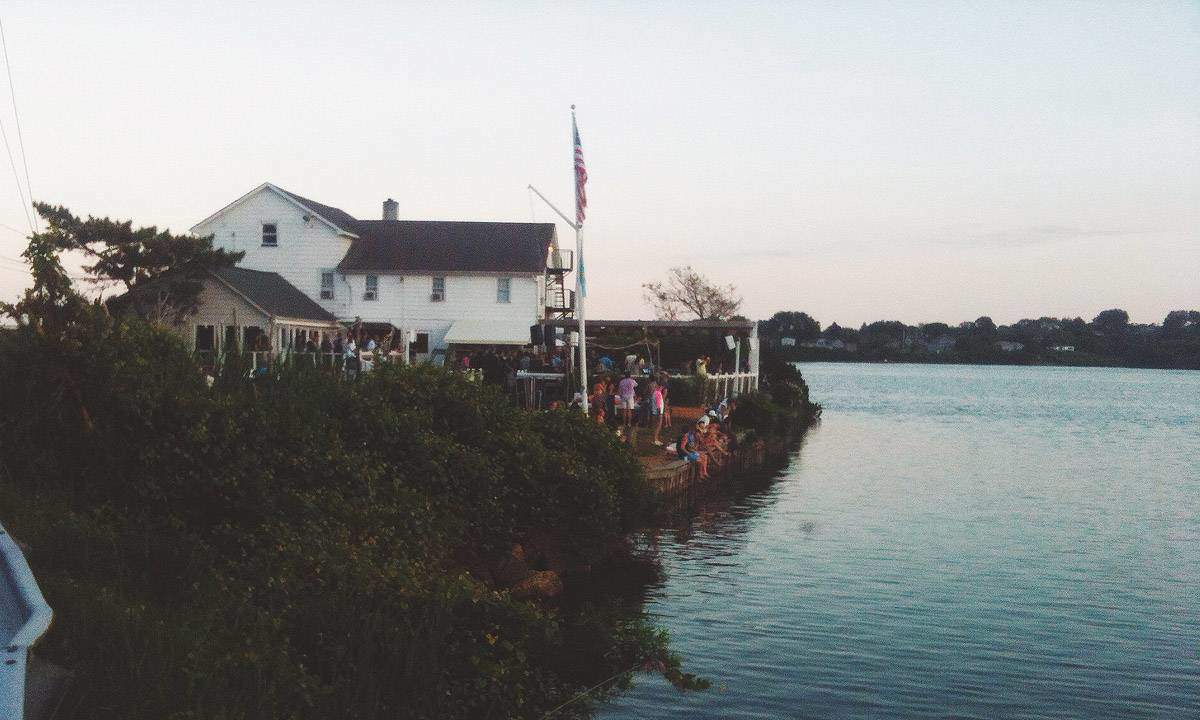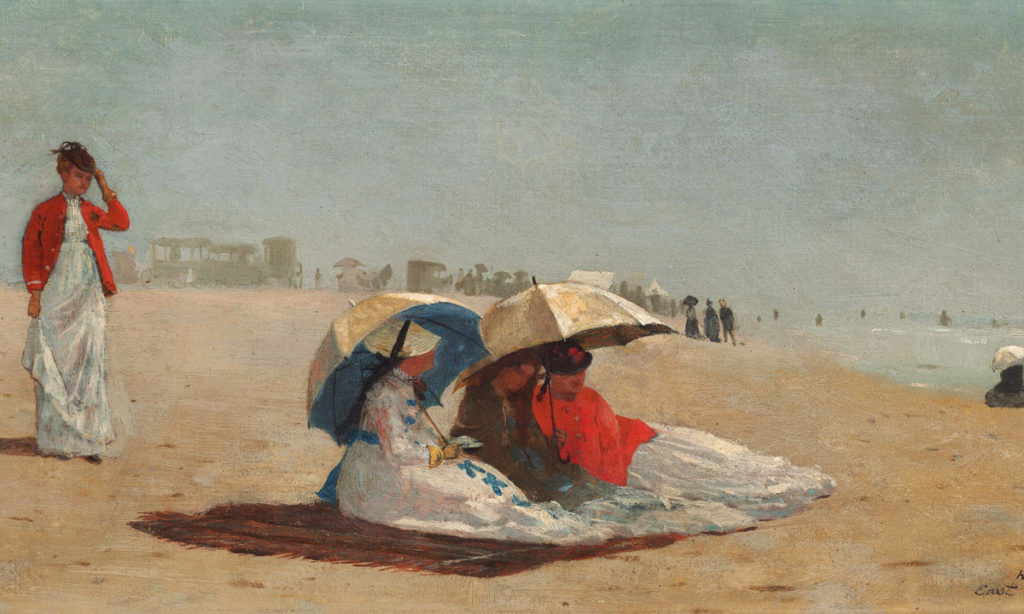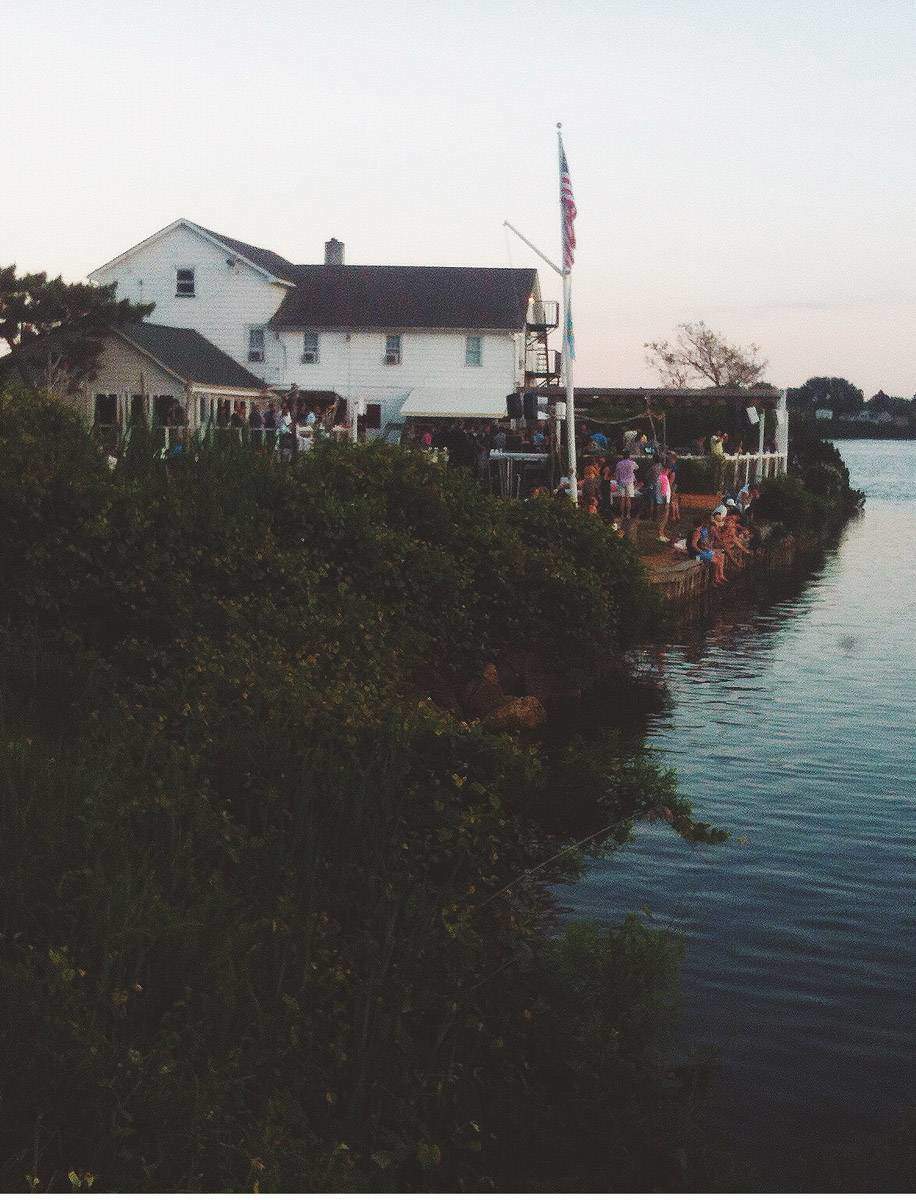The two lane road, even heading in on a Sunday, can’t help but get backed up with traffic that slows to a crawl. In a way I don’t understand, this is part of the allure of the east end of Long Island for the people who love it, the source of an essential bond. I was on this road, driving to Montauk with my boyfriend; outsiders whose understanding of the Hamptons is admittedly shaped as such. We were about to spend two days at Ruschmeyer’s Hotel with the most obscenely fortunate of them all: those with no need to get back to the city for Monday morning.
After Bridgehampton and Sagaponack, we came to the village of East Hampton, where we stopped for a coffee. This village is notable for its string of clothing and jewelry stores, the most down market of them all being a J. Crew, which stands out like a sheepish kid from New Jersey trying to get past his first velvet rope. Turn any corner off that main strip and homes so painstakingly tended that they’ve achieved the slightly creepy perfection of a fairytale pass by one after another. There are no Thomas Kinkaid landscapes in real life, but here, close enough.
In East Hampton and the rest of the villages collectively known as the Hamptons, you run up against the uber-privileged, many of whom have been summering here for generations. (There are a few of their forbearers in the painting at the top of this essay, Winslow Homer’s “East Hampton Beach” from 1874). Rather, you don’t run up against them so much as drive by the Maidstone Club and know that they’re in there. You can also drive down the lanes where the likes of Martha Stewart and Jerry Seinfeld live and you can look at the tallest hedge you’ve ever seen and know that there’s a huge house behind it that you’ll never be able to see.
It’s not just the elite, though. You also run into the working class old-timers, those who have lived here their wholes lives, probably preceded by parents who lived here their whole lives, before the Hamptons were anything more than a series of fishing and whaling towns with a few old WASP families milling about them.
It’s easy to tell these two contingents apart, one by its fondness for pastels and milky pallor, the other by the writing on its t-shirts and its non-ironic trucker hats.
It’s not actually quite that simple, partly because you also run into a third contingent, the new money, which includes those who have no wealth but are striving for it, along with most of the celebrities. They can be identified by their ability to consider anything trendy as long as it’s expensive. (The four-year-old at Ruschmeyer’s with blond highlights had no idea yet what she was being groomed for.)
What you don’t run into are non-white people. This is for reasons of history’s long shadow, and also for those rooted in deliberate action: The aforementioned Maidstone Club, the most storied country club in the area, reputedly has yet to admit a single Jew or black person, and when Diana Ross married a billionaire member, he resigned because they wouldn’t let her in.
Humans love categories, crave them for the way they reduce the world to something comprehensible. When everyone is white, then, we deconstruct the whiteness, provide some points of entry into digesting that sunscreened mass of homogeneity. So, although being white in the Hamptons is more or less a prerequisite, it’s not enough—you can be the milkiest and blondest and still exist with a perpetual low-grade anxiety that your otherness will be outed, just because you accidentally profess a love of southern food or backpacking or Brooklyn.
Also, in all honesty, it would serve you well not be too attractive. Great beauty can be a dead giveaway that best case scenario, you have married into the old guard. Regardless, you are not of it. The true members aren’t typically so symmetrical. Think Jackie Kennedy, who was old-money Hamptons and who we all call beautiful, but who was also kind of strange-looking. It also helps to have the glint of unsocialized crazy in your eye. Think her of Jackie Kennedy’s relatives over at Grey Gardens.
The purest type of Hamptonite comes from a long line of Englishmen to whom the fashions of the day and the ideas of the culture at large have never reached. Their ancestors established villages mostly in the 17th century, and these families have been insisting on them being the center of the universe ever since. It’s the most rarefied path to being out of touch.
I find the most disconcerting part of the Hamptons to be the tacit agreement among everyone present to believe in the façade of small-town goodwill and charm, while obsessing over the snobbery and ambition bubbling underneath. Put very simply, you are not where it looks like you are, but rather you are in a place that is its opposite.
The Hamptons as a summer destination has never made sense to me. Tens of thousands of Manhattanites escaping the hectic heat of the city, only to meet with the same people, the same social challenges, the same collective ambition as in the city, only now against the backdrop of a string of beaches that happen to be the most inconvenient ones in the Tri-State area to reach.
Say you’re a Manhattan socialite, and every day of your life is spent maintaining that designation, and finally summer comes, and you have a chance to get away from it all. Say you go to the Hamptons. Here, you are faced with the peer pressure to work even harder at it, because Martha Stewart and Anna Wintour are really good hostesses with really big houses and are willing to crush you and your social aspirations.
Alternatively, say you’re a third-year analyst of standard Manhattan-grade ambition. When you get away for the summer to the Hamptons, it’s sort of half just a networking opportunity (the other half being reserved for spouse-hunting). There is no part where you relax because it’s summer and you are at the beach.



My understanding is that until recently, Montauk, the village at the very end of Long Island, had avoided the social strata that defined its neighbors. I have my doubts—I knew an extremely rich and status-driven person who’d had a house there for awhile already way back in 1998—but it does seem true that the old working-class element co-existed with the moneyed one more seamlessly in Montauk, and that this started to change with places like Surf Lodge, a bar and inn where rich people who prefer to moonlight as interesting people congregate.
On that Sunday night, we decided to see Surf Lodge for ourselves. No one was more astonished than me to find myself completely charmed by it. Yes, we went early on an off evening. And yes, we spent the duration at the far end of the action, dangling our feet over the ledge by the water, talking to a four-year-old and seven-year-old who were prone to discovering the hard way whether or not their shoes would float, and enjoying some delicious cocktails that didn’t pack much of a punch. But I had to acknowledge that the place hit all its marks, especially with the massive bonfire that rises nightly as the sun sets. I love a good fire. I could stare at a good fire in the sand on the water for an entire evening of weak cocktails.
The old money and new money and not-moneyed fell into the background. Which is the only way to enjoy the Hamptons. Which means you may as well just go to Fire Island, closer and calmer and gayer.
Places mentioned in this essay:
Ruschmeyer’s Hotel | 161 2nd House Road | Montauk, NY
The Maidstone Club | 29 Maidstone Lane | East Hampton, NY
The Surf Lodge | 183 Edgemere Street | Montauk, NY








